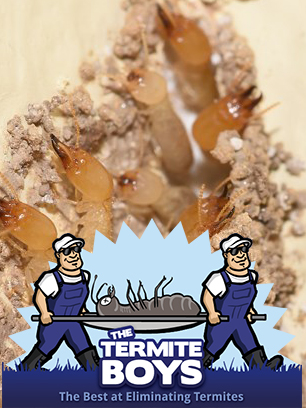Subterranean, drywood and dampwood termite species can be found in the US, but the eastern subterranean termite (Reticulitermes flavipes) is the only species that establishes destructive infestations within homes and buildings in and around Boston. The eastern subterranean termite’s native habitat covers the entire eastern half of the country, as well as most states west of the Mississippi River, making this species the most widespread termite pest in the US. Since the eastern subterranean termite’s habitat more than doubles that of other termite pests in the country, it’s also responsible for inflicting the majority of termite-related structural damage reported annually in the US.
According to the US Department of Agriculture, termite pests inflict more than 40 billion dollars in property damage worldwide every year, and termites infest at least 600,000 homes annually in the US alone. Researchers with the University of Massachusetts at Amherst state that subterranean termites are responsible for 95 percent of all termite-related structural damage that occurs each year in the country, and studies show that eastern subterranean termites are becoming more prevalent in the northeast US and southeast Canada where they are gradually expanding their habitat range northward.
Subterranean termites live in colonies within moist ground soil where workers regularly leave nests to tunnel through the earth in search of food. Eastern subterranean termites naturally thrive in forested regions where they provide an essential ecological service by converting dead wood into soil nutrients. Considering that much of Massachusetts is covered by dense forest, eastern subterranean termite colonies are relatively abundant below the ground in urban and suburban areas of the state. Workers easily infest substructural wood components that are in contact with moist soil, but they can also infest above ground substructural wood components at the base of timber-framed homes by building protective mud tubes. These mud tubes protect workers from the desiccating effect of outside air, and they are often seen protruding from the earth along exterior foundation walls.
Mud tubes are as large or slightly larger than a pencil in width, but they suddenly narrow down to 1/16 inch in length in order to fit through cracks in foundation walls where they connect to interior substructural wood components. Spotting these mud tubes is the most common first sign that a subterranean termite infestation has been established. Since subterranean termites live in soil, the first substructural wood they are able to access is that closest to the ground. Unfortunately, this means that workers usually infest structurally important lumber components such as girder ends, posts and columns, beams, floor supports, sill plates, and laminated timbers.
Have you ever found termite mud tubes on a dead tree stump in your yard?

